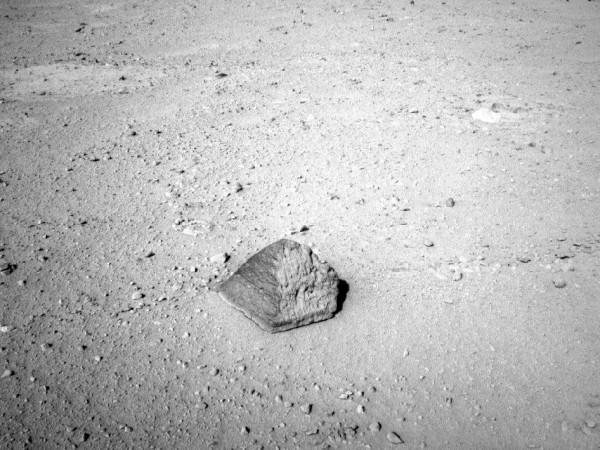
NASA's Mars Curiosity Rover will examine the first rock football-size martial rock on Friday, more than a month after it landed on the red planet.
Curiosity is about 8 feet (2.5 metres) from the rock which been named "Jake Matijevic" after their colleague and the surface operations systems chief engineer for Mars Science Laboratory and the project's Curiosity rover. Jake passed away last month.
Jake Matijevic lies about halfway from Curiosity's landing site, Bradbury Landing, to a location called Glenelg.
In the upcoming days, the team with the help of a mounted Alpha Particle X-Ray Spectrometer and the mast-mounted, laser-zapping Chemistry and Camera Instrument will identify the elements and take photographs of the rock.
"This robot was built to rove, and the team is really getting a good rhythm of driving day after day when that's the priority," said Mars Science Laboratory Project Manager Richard Cook of NASA's Jet Propulsion Laboratory in Pasadena, Calif.
The team is now planning to choose a rock from the Glenelg area for the rover's first use of its capability to analyze powder drilled from interiors of rocks.
"As we're getting closer to the light-toned area, we see thin, dark bands of unknown origin," said Mars Science Laboratory Project Scientist John Grotzinger of the California Institute of Technology, Pasadena.
"The smaller-scale diversity is becoming more evident as we get closer, providing more potential targets for investigation," he added.
During Curiosity's two-year prime mission, researchers will use rover's ten science instruments to assess whether the selected field site inside Gale Crater ever offered environmental conditions favorable for microbial life.


!['Had denied Housefull franchise as they wanted me to wear a bikini': Tia Bajpai on turning down bold scripts [Exclusive] 'Had denied Housefull franchise as they wanted me to wear a bikini': Tia Bajpai on turning down bold scripts [Exclusive]](https://data1.ibtimes.co.in/en/full/806605/had-denied-housefull-franchise-they-wanted-me-wear-bikini-tia-bajpai-turning-down-bold.png?w=220&h=135&l=50&t=40)



!['Had denied Housefull franchise as they wanted me to wear a bikini': Tia Bajpai on turning down bold scripts [Exclusive]](https://data1.ibtimes.co.in/en/full/806605/had-denied-housefull-franchise-they-wanted-me-wear-bikini-tia-bajpai-turning-down-bold.png?w=220&h=135)


![Nayanthara and Dhanush ignore each other as they attend wedding amid feud over Nayanthara's Netflix documentary row [Watch]](https://data1.ibtimes.co.in/en/full/806599/nayanthara-dhanush-ignore-each-other-they-attend-wedding-amid-feud-over-nayantharas-netflix.jpg?w=220&h=135)